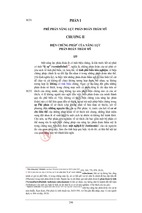THE MERGERS & ACQUISITIONS HANDBOOK First Edition
SecuritiesConnect™
WWW.SECURITIESCONNECT.COM
THE MERGERS
& ACQUISITIONS
HANDBOOK
A Practical Guide to
Negotiated Transactions
First Edition
Printed in Canada
DLA PIPER LLP
BC-BFP-PG-217
>
DIANE HOLT FRANKLE
STEPHEN A. LANDSMAN
JEFFREY J. GREENE
DLA PIPER
Print Date: November, 2007
This publication is designed to provide accurate and authoritative
information in regard to the subject matter covered. It is published
with the understanding that the publisher is not engaged in rendering
legal, accounting or other professional services. If legal advice or
other expert assistance is required, the services of a competent
professional should be sought.
— From a Declaration of Principles jointly adopted by
a Committee of the American Bar Association and
a Committee of Publishers.
This guidebook is part of Bowne’s SecuritiesConnectTM Library.
FIRST EDITION
Bowne & Co., Inc.
55 Water Street
New York, New York 10014
Phone: (212) 924-5500
email:
[email protected]
www.SecuritiesConnect.com
Design and Layout Copyright© 2007 by Bowne & Co., Inc.
O
About Bowne & Co., Inc.
Bowne & Co., Inc. (NYSE: BNE) provides financial, marketing and
business communications services around the world. Dealmakers rely on
Bowne to handle critical transactional communications with speed and
accuracy. Compliance professionals turn to Bowne to prepare and file
regulatory and shareholder communications online and in print. Marketers
look to Bowne to create and distribute customized, one-to-one
communications on demand. With 3,200 employees in 60 offices around
the globe, Bowne has met the ever-changing demands of its clients for more
than 230 years. For more information, please visit www.bowne.com.
For up-to-date, relevant insight on securities, regulatory, and
compliance matters, please visit www.SecuritiesConnect.com.
About DLA Piper
DLA PIPER has more than 3,400 lawyers in 25 countries and 64 offices
throughout Asia, Continental Europe, the Middle East, the United States, and
the United Kingdom. The firm’s global legal practice includes commercial,
corporate, finance, human resources, litigation, real estate, regulatory and
legislative, technology, media and communications law. The firm’s clients
range from multinational, Global 1000 and Fortune 500 enterprises to
emerging growth companies.
DLA Piper is the only law firm with at least 1,500 lawyers on each side of
the Atlantic. The firm’s unmatched global presence enables DLA Piper
attorneys to meet the ongoing needs of clients in the world’s key economic,
technology and governmental centers, including: Beijing, Brussels, Chicago,
Frankfurt, Hong Kong, London, Los Angeles, Moscow, New York, Tokyo,
Shanghai, Singapore, and Washington, D.C. For more information on DLA
Piper, please visit the firm’s web site at www.dlapiper.com.
i
ii
About the Editors
DIANE HOLT FRANKLE is a partner in the Silicon Valley, California office
of DLA Piper and Co-Chair of the firm’s global Mergers & Acquisitions Group.
Ms. Frankle specializes in mergers and acquisitions, corporate governance,
and antitakeover counseling. She has represented numerous companies, both
buyers and sellers, in asset deals, stock and cash mergers, tender offers,
management buyouts and other complex acquisitions, and in implementing
defensive strategies. Ms. Frankle is a member of the American Bar Association’s Committee on Negotiated Acquisitions and Co-Chairs the Committee’s
Task Force on Public Company Acquisitions. She speaks and writes regularly
in programs for both clients and practicing lawyers on mergers and acquisitions, corporate governance, the fiduciary duties of directors, and federal and
state securities laws. She is listed in the Best Lawyers in America, Who’s Who
Legal: The International Who’s Who of Business Lawyers, Chambers Global
Guide and as one of Northern California’s Super Lawyers, for her mergers and
acquisitions practice. Ms. Frankle received her J.D. magna cum laude from
Georgetown University Law Center in 1979. After law school, she served as
law clerk to Senior District Judge R. Dorsey Watkins, Senior District Judge of
the United State District Court for the District of Maryland from 1979 to 1981.
STEPHEN A. LANDSMAN is a partner in the Chicago office of DLA
Piper and is Co-Chair of the firm’s global Mergers & Acquisitions Group. He
engages in a general corporate, business counselling, and tax practice, with
special emphasis in the area of mergers and acquisitions. Mr. Landsman has
extensive in-depth experience in numerous industries as lead counsel
representing both purchasers and sellers in a wide variety of transactions
including public to public, private to public, private to private, leveraged
recapitalization, divisional or asset sales and joint venture/strategic alliance
transactions. Mr. Landsman has been a speaker on various corporate law
matters and has been the author of several published articles in his field. In
2007 the respected English research firm Chambers & Partners cites
Mr. Landsman in Chambers USA: America’s Leading Lawyers for Business.
He has been designated an Illinois Super Lawyer in both 2005 and 2006 and
is also listed in Who’s Who in America and Who’s Who in American Law.
JEFFREY J. GREENE is a partner in the Shanghai office of DLA Piper.
He concentrates his practice in the areas of cross-border mergers and
acquisitions, corporate and securities law. Mr. Greene regularly advises clients
in a wide variety of mergers, acquisitions and change of control transactions,
and has led cross-border M&A deals in Australia, China, Finland, Germany,
India, South Korea and the United Kingdom, among others. Mr. Greene
frequently presents to practicing attorneys on the areas of mergers and
acquisitions. Before relocating to the firm’s Shanghai office, Mr. Greene practiced in the firm’s Seattle, Washington office where he was named a “Rising
Star” by Washington Law and Politics magazine from 2001 to 2006.
iii
iv
Acknowledgements
Editorial:
Diane Holt Frankle
Steven A. Landsman
Jeffrey J. Greene
Contributing Authors:
William H. Bromfield
Sulee J. Clay
Stephanie M. Decker
Trenton C. Dykes
Francis J. Feeney, Jr.
Danielle S. Fitzpatrick
Diane Holt Frankle
Jeffrey J. Greene
David M. Hryck
Purnima N. King
Paolo Morante
Kathryn H. Ness
Michelle D. Paterniti
Thomas B. Reems
Robb Scott
Jeffrey M. Shohet
Christian Waage
Eric H. Wang
Silicon Valley, California
Chicago, Illinois
Shanghai, China
Seattle, Washington
Washington, DC
Shanghai, China
Seattle, Washington
Boston, Massachusetts
Seattle, Washington
Silicon Valley, California
Shanghai, China
New York, New York
San Francisco, California
Baltimore, Maryland
New York, New York
Boston, Massachusetts
Washington, DC
San Francisco, California
San Diego, California
San Diego, California
Silicon Valley, California
Numerous partners, associates and other colleagues have contributed
to this handbook. Our special thanks to Edward Batts, Joel Ginsberg,
Lawrence Gold, Mark Hoffman, W. Michael Hutchings, Peter Lawrence,
Albert Li, Laura Puckett and David Reitz.
v
PLEASE READ THIS DISCLAIMER: This handbook is intended to
provide a general, informational overview to non-lawyers and is not
intended to provide legal advice as to any particular situation. The laws,
regulations and other rules applicable to each specific variation of the deals
discussed in this handbook are complex and subject to change. Experienced counsel should be involved in every aspect of the planning, structuring and negotiation of any M&A transaction, including the drafting and
execution of all transaction documentation.
Without limiting the generality of the preceeding disclaimer, the
discussion of the basic Internal Revenue Service rules and regulations relating to the taxation of business combinations is intended to
be a summary only. Such rules and regulations are extremely complex
and evolving, and by definition are dependent on the specific facts of
each particular case. Participants to business combinations must
consult their tax advisors early and often when structuring M&A
deals.
The views in this handbook are those of the editorial staff and the
contributing authors only and do not necessarily reflect the views of DLA
Piper.
vi
TABLE OF CONTENTS
Chapter 1 The Mergers and Acquisitions Process . . . . . . . . . .
Why Buyers Buy and Sellers Sell. . . . . . . . . . . . . . . . . . . . . .
Elements of Value . . . . . . . . . . . . . . . . . . . . . . . . . . . . . . . . .
The Players . . . . . . . . . . . . . . . . . . . . . . . . . . . . . . . . . . . . . .
Acquisition Process . . . . . . . . . . . . . . . . . . . . . . . . . . . . . . . .
Time and Responsibility Checklist . . . . . . . . . . . . . . . . . . . . .
Leveraging The Process . . . . . . . . . . . . . . . . . . . . . . . . . . . .
Chapter 2 Letters of Intent & Term Sheets . . . . . . . . . . . . . . . .
Letter of Intent Pros and Cons . . . . . . . . . . . . . . . . . . . . . . . .
Binding or Non-Binding . . . . . . . . . . . . . . . . . . . . . . . . . . . . .
Elements of the Letter of Intent . . . . . . . . . . . . . . . . . . . . . . .
Chapter 3 The Nondisclosure Agreement . . . . . . . . . . . . . . . . .
Understanding the Scope of Confidential Information . . . . . . .
Use of Confidential Information . . . . . . . . . . . . . . . . . . . . . . .
Non-Disclosure of Discussions. . . . . . . . . . . . . . . . . . . . . . . .
Legally Required Disclosures. . . . . . . . . . . . . . . . . . . . . . . . .
Return or Destruction of Materials . . . . . . . . . . . . . . . . . . . . .
Non-Solicitation/Employment . . . . . . . . . . . . . . . . . . . . . . . . .
Term . . . . . . . . . . . . . . . . . . . . . . . . . . . . . . . . . . . . . . . . . . .
Remedies . . . . . . . . . . . . . . . . . . . . . . . . . . . . . . . . . . . . . . .
Choice of Law/Forum . . . . . . . . . . . . . . . . . . . . . . . . . . . . . .
Chapter 4 Legal Due Diligence . . . . . . . . . . . . . . . . . . . . . . . . .
What Is Due Diligence and When Is It Performed? . . . . . . . .
What Are the Objectives of Due Diligence? . . . . . . . . . . . . . .
Overview of the Due Diligence Process . . . . . . . . . . . . . . . . .
Who Is Involved and the Necessity of a Diverse Team of
Experts . . . . . . . . . . . . . . . . . . . . . . . . . . . . . . . . . . . . . . .
Due Diligence Request List . . . . . . . . . . . . . . . . . . . . . . . . . .
Response to Due Diligence Request List . . . . . . . . . . . . . . . .
Scope and Process of Review . . . . . . . . . . . . . . . . . . . . . . . .
Results of Review . . . . . . . . . . . . . . . . . . . . . . . . . . . . . . . . .
Chapter 5 Deal Structures . . . . . . . . . . . . . . . . . . . . . . . . . . . . .
Principal Deal Structures . . . . . . . . . . . . . . . . . . . . . . . . . . . .
Stock Purchase . . . . . . . . . . . . . . . . . . . . . . . . . . . . . . . . . . .
Asset Acquisition . . . . . . . . . . . . . . . . . . . . . . . . . . . . . . . . . .
Mergers . . . . . . . . . . . . . . . . . . . . . . . . . . . . . . . . . . . . . . . . .
Considerations in Choosing a Structure . . . . . . . . . . . . . . . . .
Chapter 6 Definitive Acquisition Agreement. . . . . . . . . . . . . . .
Definitions . . . . . . . . . . . . . . . . . . . . . . . . . . . . . . . . . . . . . . .
Economic and Structural Provisions . . . . . . . . . . . . . . . . . . . .
Representations and Warranties . . . . . . . . . . . . . . . . . . . . . .
Interim and Post-Closing Covenants . . . . . . . . . . . . . . . . . . .
1
2
2
4
5
6
7
9
10
10
11
13
14
15
15
16
17
17
18
18
18
21
21
21
22
24
25
27
29
30
33
33
33
34
35
39
47
48
48
52
59
vii
Employee Matters . . . . . . . . . . . . . . . . . . . . . . . . . . . . . . . . .
Deal Protection Devices. . . . . . . . . . . . . . . . . . . . . . . . . . . . .
Conditions to Closing. . . . . . . . . . . . . . . . . . . . . . . . . . . . . . .
Indemnification . . . . . . . . . . . . . . . . . . . . . . . . . . . . . . . . . . .
Termination . . . . . . . . . . . . . . . . . . . . . . . . . . . . . . . . . . . . . .
Miscellaneous Provisions. . . . . . . . . . . . . . . . . . . . . . . . . . . .
Chapter 7 Indemnification & Contribution . . . . . . . . . . . . . . . .
Why Indemnification? . . . . . . . . . . . . . . . . . . . . . . . . . . . . . .
Acquisitions of Publicly-Traded Targets . . . . . . . . . . . . . . . . .
Types of Indemnified Matters . . . . . . . . . . . . . . . . . . . . . . . . .
Definitional Limitations on Indemnification . . . . . . . . . . . . . . .
Monetary Limitations on Indemnification . . . . . . . . . . . . . . . .
Other Limitations on Indemnification . . . . . . . . . . . . . . . . . . .
Sole and Exclusive Remedy. . . . . . . . . . . . . . . . . . . . . . . . . .
Indemnification Procedures; Dispute Resolution. . . . . . . . . . .
Hold-Backs of the Purchase Price . . . . . . . . . . . . . . . . . . . . .
Contribution Agreements . . . . . . . . . . . . . . . . . . . . . . . . . . . .
Chapter 8 Fiduciary Duties of Board of Directors . . . . . . . . . .
Overview of Fiduciary Duties . . . . . . . . . . . . . . . . . . . . . . . . .
Heightened Fiduciary Duty . . . . . . . . . . . . . . . . . . . . . . . . . . .
Fiduciary Duty Implications of Certain M&A Transaction
Terms . . . . . . . . . . . . . . . . . . . . . . . . . . . . . . . . . . . . . . . .
Voting Agreements . . . . . . . . . . . . . . . . . . . . . . . . . . . . . . . .
Chapter 9 Stockholder Approvals and Securities
Compliance . . . . . . . . . . . . . . . . . . . . . . . . . . . . . . . . . . . . . . . . .
Obtaining Stockholder Approvals . . . . . . . . . . . . . . . . . . . . . .
Registration Statements For Buyer’s Securities . . . . . . . . . . .
Chapter 10 The Role of Investment Bankers in M&A
Transactions . . . . . . . . . . . . . . . . . . . . . . . . . . . . . . . . . . . . . . . .
The Engagement Letter . . . . . . . . . . . . . . . . . . . . . . . . . . . . .
Fairness Opinions . . . . . . . . . . . . . . . . . . . . . . . . . . . . . . . . .
Chapter 11 Hart-Scott-Rodino and Related Regulatory
Matters . . . . . . . . . . . . . . . . . . . . . . . . . . . . . . . . . . . . . . . . . . . .
Brief History and Purpose of the Act . . . . . . . . . . . . . . . . . . .
HSR Notification Requirements . . . . . . . . . . . . . . . . . . . . . . .
Beyond Notification . . . . . . . . . . . . . . . . . . . . . . . . . . . . . . . .
Beyond the HSR Act — Government Challenges Outside the
Statutory Context . . . . . . . . . . . . . . . . . . . . . . . . . . . . . . . .
Beyond the HSR Act — International Pre-Merger Notification
Requirements. . . . . . . . . . . . . . . . . . . . . . . . . . . . . . . . . . .
Chapter 12 Tax Considerations . . . . . . . . . . . . . . . . . . . . . . . . .
Taxable Transactions . . . . . . . . . . . . . . . . . . . . . . . . . . . . . . .
Tax-Free Reorganization . . . . . . . . . . . . . . . . . . . . . . . . . . . .
viii
61
62
63
67
67
68
69
69
70
71
73
74
76
77
77
78
79
81
81
89
91
94
97
98
104
105
107
112
115
115
115
124
126
126
127
127
128
Annex Section . . . . . . . . . . . . . . . . . . . . . . . . . . . . . . . . . . . . . .
Annex 3-A Mutual Nondisclosure Agreement . . . . . . . . . . . . .
General . . . . . . . . . . . . . . . . . . . . . . . . . . . . . . . . . . . . . . . . .
Definitions . . . . . . . . . . . . . . . . . . . . . . . . . . . . . . . . . . . . . . .
Use of Evaluation Material . . . . . . . . . . . . . . . . . . . . . . . . . . .
Non-Disclosure of Discussions. . . . . . . . . . . . . . . . . . . . . . . .
Legally Required Disclosure . . . . . . . . . . . . . . . . . . . . . . . . .
Return or Destruction of Evaluation Material . . . . . . . . . . . . .
No Solicitation/Employment . . . . . . . . . . . . . . . . . . . . . . . . . .
Standstill . . . . . . . . . . . . . . . . . . . . . . . . . . . . . . . . . . . . . . . .
Maintaining Privilege . . . . . . . . . . . . . . . . . . . . . . . . . . . . . . .
Compliance with Securities Laws . . . . . . . . . . . . . . . . . . . . . .
Not a Transaction Agreement . . . . . . . . . . . . . . . . . . . . . . . .
No Representations or Warranties; No Obligation to Disclose . . .
Modifications and Waiver . . . . . . . . . . . . . . . . . . . . . . . . . . . .
Remedies . . . . . . . . . . . . . . . . . . . . . . . . . . . . . . . . . . . . . . .
Legal Fees . . . . . . . . . . . . . . . . . . . . . . . . . . . . . . . . . . . . . .
Governing Law . . . . . . . . . . . . . . . . . . . . . . . . . . . . . . . . . . .
Severability . . . . . . . . . . . . . . . . . . . . . . . . . . . . . . . . . . . . . .
Construction . . . . . . . . . . . . . . . . . . . . . . . . . . . . . . . . . . . . .
Term . . . . . . . . . . . . . . . . . . . . . . . . . . . . . . . . . . . . . . . . . . .
Entire Agreement . . . . . . . . . . . . . . . . . . . . . . . . . . . . . . . . .
Counterparts . . . . . . . . . . . . . . . . . . . . . . . . . . . . . . . . . . . . .
Annex 3-B Summary Checklist . . . . . . . . . . . . . . . . . . . . . . .
Definition of Confidential Information . . . . . . . . . . . . . . . . . . .
Use of Confidential Information . . . . . . . . . . . . . . . . . . . . . . .
Non-Disclosure of Discussions. . . . . . . . . . . . . . . . . . . . . . . .
Legally Required Disclosures. . . . . . . . . . . . . . . . . . . . . . . . .
Return or Destruction of Materials . . . . . . . . . . . . . . . . . . . . .
Non-Solicitation/Employment . . . . . . . . . . . . . . . . . . . . . . . . .
Term . . . . . . . . . . . . . . . . . . . . . . . . . . . . . . . . . . . . . . . . . . .
Remedies . . . . . . . . . . . . . . . . . . . . . . . . . . . . . . . . . . . . . . .
Miscellaneous Provisions Applicable to Providers and
Recipients . . . . . . . . . . . . . . . . . . . . . . . . . . . . . . . . . . . . .
Annex 4 Sample Due Diligence Checklist . . . . . . . . . . . . . . .
Annex 11 Certain HSR Exempt Transactions . . . . . . . . . . . . .
A-1
A-1
A-1
A-1
A-2
A-2
A-2
A-3
A-3
A-3
A-5
A-5
A-5
A-5
A-6
A-6
A-6
A-6
A-6
A-7
A-7
A-7
A-7
A-9
A-9
A-10
A-10
A-11
A-11
A-12
A-12
A-13
A-13
A-15
A-41
ix
x
Preface
The term mergers and acquisitions, or “M&A”, refers generally to a
number of different types of transactions, including mergers, asset acquisitions
and stock purchases. While there may be some degree of overlap among the
various transaction types, each deal and each deal type is its own unique
animal driven by certain practical and business considerations of the parties.
For example, on the sell-side, a company may look to an M&A deal to
provide liquidity to its founders or because it has reached the limits of its
ability to grow organically. A would-be buyer, on the other hand, may be
motivated by the prospect of acquiring strategic technology, expanding
product offerings, adding distribution channels or increasing market share.
Even under ideal circumstances, an M&A transaction will consume management resources of both the prospective buyer and would-be seller. Consequently, the parties must have realistic expectations of the timing, structuring,
regulatory and other related considerations. Because every transaction is different, it must be approached from the vantage point of the specific facts and
circumstances at hand. In putting this handbook together, we endeavored to
focus on these practical matters and to use them as a backdrop for our
discussion of the legal considerations associated with doing an M&A deal.
This handbook addresses negotiated transactions only. As such, we do
not consider hostile takeovers or other situations where the would-be buyer
and would-be seller have not come together willingly to attempt to do a deal.
With that said, a negotiated transaction is nevertheless an adversarial proceeding. While all parties to the deal may be keenly interested in getting the
deal to closing, one should never lose sight of the fact that the parties have
different, competing and, generally speaking, conflicting interests.
While much of the information contained in this handbook regarding both
deal structures and principal deal terms applies to transactions involving both
public and private companies on the buy and sell side, certain structural
considerations and deal terms may be significantly affected by whether the
parties involved are publicly traded or privately held. Reference is made to these
distinctions throughout the book only where relevant to a particular discussion.
Finally, although Federal securities and anti-trust laws may come into
play in certain transactions based on the type of deal consideration or the
nature of the parties, an M&A transaction is for the most part driven by the
laws of the particular state(s) in which the constituents are incorporated or
domiciled. Accordingly, this handbook is intended to be agnostic with
respect to particular state laws. However, because it is generally accepted
among practitioners that Delaware law tends to offer the most comprehensive body of M&A and corporations law, and because a considerable
number of the public companies in the United States are incorporated in
Delaware, Delaware law is sometimes discussed for illustrative purposes.
xi
xii
Chapter 1
The Mergers and Acquisitions Process
As we use the term in this handbook, the mergers and acquisitions
(“M&A”) process describes the methods and arrangements by which a
prospective buyer and seller consummate the purchase and sale of a
company. Through this process one party decides to buy and the other
decides to sell at an agreed price and on agreed terms. To make such a
decision, the parties have to reach some level of understanding of underlying information. This information almost always includes proprietary information which can be obtained only with the consent of the parties.
Moreover, it is the kind of information which the parties will disclose only
after they are relatively confident that a deal will follow. Accordingly, the part
of the process by which the parties exchange information (referred to as
“due diligence”) often parallels to some extent the part of the process by
which the parties arrive at a conceptual price and deal structure (the “letter
of intent” or “term sheet”) and by which the parties finally establish the price,
the allocation of risk and other terms and conditions of the arrangement (the
“definitive agreements”). The overall effort to bring about the transaction is
coordinated with a master checklist (the “time and responsibility checklist”).
This chapter provides an overview of the stages of the acquisition
process with reference to some of the tools that have evolved to manage
each stage. Mergers and acquisitions are generic terms that may refer to a
variety of transactions, including asset purchases, stock purchases, mergers, share exchanges and the like. Except where the context indicates
otherwise, the term “acquisition” is used in the broad sense to encompass
acquisitions and dispositions.
Entering the acquisition process is much like starting a marriage or a
new job or other life altering event in that it involves a major commitment,
and is best embarked upon after carefully considering the long-term goals
of all parties involved. If you make a bad hire or match, you are likely to
regret it for some time, and it is likely to be expensive.
The acquisition process involves a large cast of insiders and consultants, some of whom may have conflicting interests. There are also regulatory considerations that are usually routine if addressed in a timely
manner.
There are different kinds of buyers/sellers and different kinds of deals,
and the motivation for doing deals are equally plentiful and varied.
1
The Mergers & Acquisitions Handbook
A Practical Guide to Negotiated Transactions
Why Buyers Buy and Sellers Sell
Competitive Advantage. Although it is unusual, there are times when a
buyer will acquire a company primarily to keep someone else from buying it.
Strategic Considerations. Strategic buyers are the proverbial crown
princes of buyers because, by definition, they pay more. Generally, a
strategic buyer pays what the company is worth to the buyer rather than
what it is worth on its own.
Cheaper to Buy Than Make. There are buyers for whom buying other
companies is an everyday part of their businesses. These include buyers doing
“roll ups,” which are usually companies operating in an industry that is consolidating. Generally, these buyers intend to keep and operate the companies
they buy. On the other hand, private equity funds (formerly referred to as
leveraged buyout funds) and merchant banks typically buy companies with the
intention of reselling them or taking them public within some predetermined
period of time. These professional buyers may be opportunistic or strategic,
depending on the circumstances. Generally, they are experienced buyers with
experienced advisors. Historically, they do not overpay, but they also know
what they are doing and do not waste the seller’s time.
Risk Mitigation. There are times when the best way to resolve or avoid
a lawsuit is to buy the other party.
Elements of Value
It can be fairly inferred from the different kinds of buyers and different
kinds of deals that the parties frequently go into the M&A process with
different goals and expectations. These differences often center around the
elements of value. The deal values of the party with the greatest negotiating
strength generally dictate deal structure.
• Price. In a cash deal, the price dynamic reflects common sense.
Setting aside tax considerations, the higher the price, the better for
the seller and the worse for the buyer. However, where the currency
is the stock of a public company, this may not be true if the deal is
large enough to be noticed by the market. Ironically, if the market
thinks the price is too high (not accretive), the value of the market
price of the stock received as the purchase price will fall after the
transaction. Unless the seller has been able to sell or hedge the stock
before this fall takes place, the seller will end up receiving less total
value because the price was set too high at the outset.
• Tax and accounting consequences. Tax and accounting consequences depend on the deal structure. In an acquisition, the buyer
2
Chapter 1 - The Mergers and Acquisitions Process
acquires either the seller’s assets or the seller itself. (To make
matters complicated, there is one kind of deal — under Internal
Revenue Code Section 338(h) — in which the buyer acquires the
seller but the transaction is taxed as if the buyer had acquired
assets.) Generally, the buyer pays for what is acquired either with
its stock, cash, or a combination of both.
It is often possible to structure an acquisition as a tax-free reorganization. If the transaction is taxable, the gain may be taxed as either
capital gain rates or ordinary rates. In addition, there are some
potentially scary tax complications, generally depending on how the
seller has been formed and operated. For example, if the seller is an
S corporation that converted from C corporation status, it may have
“built in gain” that will be taxed. Or if the seller has issued stock
options that vest, or bonuses that are earned upon a sale of the
company, the “excess golden parachute” payment punitive excise
tax must be considered. There may also be a punitive excise tax if
stock options were granted at less than fair market value.
The choices here are complicated and often binary (that is, what is
good for one party is likely to be bad for the other). Just as the seller
wants the highest cash price, the seller also wants to pay as little tax
as possible. A tax-free deal sounds like it would be best for the seller,
but cash is always taxed. If the proceeds are to be taxed, the seller
does not want them double-taxed (at the corporate level and again at
the stockholder level) and for this reason would prefer a stock sale
over an asset sale. The seller would also prefer to be taxed at capital
gain rates. If the buyer is a taxpayer and sensitive to tax consequences, the buyer may want a portion of the purchase price paid in
respect of covenants not to compete, which can be expensed more
quickly than purchase price, but which are taxed to the seller at
ordinary income rates. If the seller is more sensitive to impact or
earnings (e.g., a pre-IPO company), it will not want the more rapid
amortization for non-compete payments.
• Liabilities and the Allocation of Risk. If a buyer buys stock, it is buying
the company rather than the company’s assets. The company brings
with it all of the known and unknown liabilities arising from the operation of the business. The known liabilities are directly addressed, but
most buyers prefer to buy assets in order to avoid, to the extent
possible, the assumption of the seller’s contingent liabilities.
• Liquidity. The seller’s primary motivation for the sale of a successful
company is typically to convert an illiquid asset (the company) into a
3
The Mergers & Acquisitions Handbook
A Practical Guide to Negotiated Transactions
liquid asset (cash or the buyer’s publicly traded stock). On the other
hand, depending on the circumstances, many buyers using stock to
make acquisitions are concerned about the potential impact of a big
block of stock coming onto the market. As a consequence, if the
acquisition is paid for with stock, the buyer often wants to restrict the
subsequent transfer or hedging of that stock.
The Players
There is a long list of players potentially involved in helping the parties
reconcile the elements of value applicable to their particular type of deal. In
general, the constituencies include some or all of the following:
• Owners. One way or another, the owners/stockholders always get a
voice in the disposition of a company. However, depending on the
form of transaction, the owners may not get a direct voice in the
decision to acquire a company.
• Management. It is unusual to buy or sell a company without the
cooperation of management.
• Employees. If management and the owners are satisfied, employees
as a group generally have only indirect, if any, influence. The exceptions are where the employees are unionized, where the buyer and
seller are relying on the employees to perform during a transitional
period, and where a large number of employees will lose their jobs
(requiring compliance with state and federal plant closure laws).
• Third parties.
m Customers
m Lenders
m Creditors
• Advisors.
m Counsel (corporate, tax, regulatory, intellectual property, etc.)
m Investment bankers
m Valuation experts
m Accountants
m Escrow Agents
m Financial Printers
• Regulators.
m Federal
Trade Commission. The Hart-Scott-Rodino Act,
administered by the FTC, applies only to large deals
m
4
Securities Exchange Commission and State Securities Regulators (in the event stock is part of the purchase price or one of
the companies is publicly held)





















